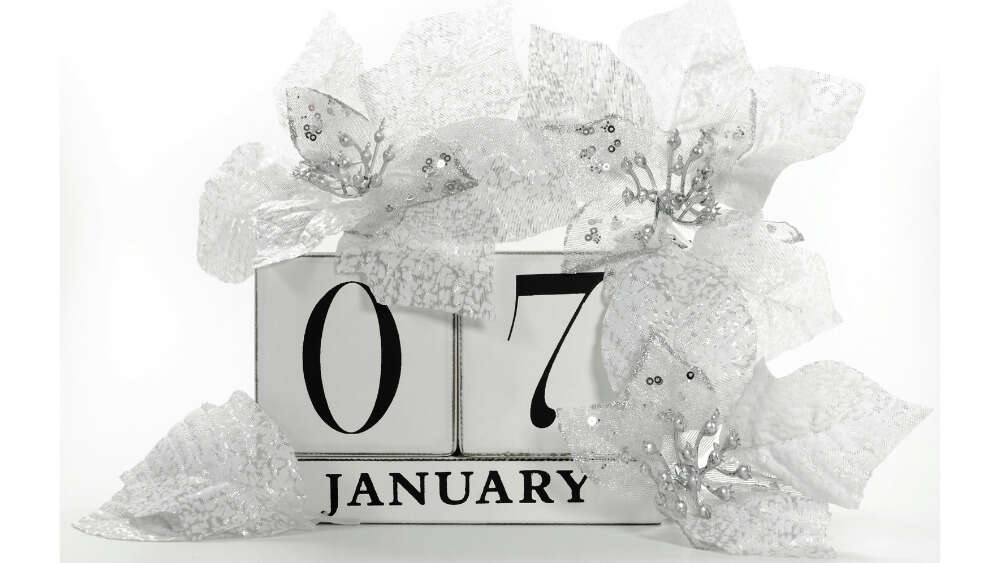Why January 7 is Christmas Day for some Orthodox Christians
Here’s why they celebrate January 7, rather than December 25
Eastern European and Middle Eastern Orthodox Christians will celebrate Christmas Day on (January 7), 13 days after many other Christians. So what is the reason for these different dates? Do we use different calendars or something?
Actually, yes, we do.
Christians who celebrate Christmas on December 25 do so in accordance with the Gregorian calendar that was introduced by Pope Gregory XIII in 1582. Christians who celebrate Christmas on January 7, though, do so using the Julian calendar that was introduced by Roman Emperor Julius Caesar in 46BC. And here’s why.
The Julian calendar
The earth takes a little bit more than 365 days to make its journey around the sun. To be precise, it takes 365.24219 days.
Communicating that celestial journey via a calendar is a bit tricky because here on earth, we experience life in 24 hour periods* – the amount of time it takes for the earth to rotate on its axis.
Given that the sun’s journey can’t be equally divided into days, a calendar that uniformly rounds every year up to a 366 days or down to 365 days is not going to work if we want our calendar to mark the same point in the sun’s journey year after year.
So how does one record this extra 0.24219th of a day in the year on a calendar?
To counter this, before Julius Caesar was emperor, the Romans would add days in February every now and again. But it was all a bit messy, and the calendar started being used haphazardly for political advantage. So Caesar worked on a new calendar with astronomers from Alexandria, Egypt and introduced it in 46BC – with a leap year every four years.
Unfortunately, the astronomers behind the leap year system got the 365.24219 measurement just slightly wrong – believing the earth’s journey around the sun to be 365.25 days. This equated to 11 minutes a year – time which added up as the years passed.
An imperfect alternative: the Georgian Calendar
In fact, by 1577, when Pope Gregory XIII was the head of the Catholic Church, the calendar was around ten days out of sync with the solar year – and therefore out of sync with natural occurrences on earth including the vernal (spring) equinox and the winter solstice. Apparently, Gregory was annoyed because this meant that Easter, traditionally observed on March 21, fell further away from the spring equinox with each passing year.
To solve this problem, Gregory appointed physicist Aloysius Lilius and astronomer Christopher Clavius to figure out how to get it right. And in 1582 – after five years of extensive work – Gregory’s team of experts announced a plan to tweak the system of leap years.
They proposed to hold the 366-day year every four years, except on the years that weren’t divisible by 400 (i.e. have a leap year in the year 2000, but don’t have one in 1700, 1800, or 1900). This changed the length of the average year to 365.2425 days – which means the calendar is 26 seconds off each solar year, but is much closer.
And those extra ten days they were already out? They were to be literally deleted, with Thursday 4 October 1582 followed by Friday 15 October 1582.
So, to make a long story short, the global calendar switch-over took about 300 years and involved protests and all sorts of resistance. Pope Gregory got Roman Catholic countries like Italy, France, Spain, and Portugal on board easily, but European Protestants initially would not have a bar of this Catholic intrusion.
So while the Gregorian Calendar was first introduced in 1582 – and adopted by in (most of) France, Italy, Poland, Portugal, Spain – the United States and United Kingdom both didn’t accept it until 1752.
Back to Christmas Day
Despite eastern European countries civil administrations’ acceptance of the Gregorian calendar, none of the national Eastern Orthodox Churches adopted it for use it to set dates for church or religious events.
Some did, however, accept a Revised Julian calendar** proposed in May 1923 at the Pan-Orthodox Congress of Constantinople. This revised version adopted a different leap year rule, with the aim of maximising the amount years before its dates start to diverge from Gregorian.
All of this means that today is when Russian, Ukrainian, Israeli, Egyptian, Serbian, Belarusian, Montenegrin, Kazakhstani, Macedonian, Ethiopian, Eritrean, Georgian and Moldovan Christians celebrate Jesus’ birth.
In contrast, Greek Orthodox Church of Jerusalem, Russian Orthodox Church, Serbian Orthodox Church, Georgian Orthodox and Apostolic Church, Polish Orthodox Church, Macedonian Orthodox Church and the Greek ‘Old Calendarists’ did not accept the Revised Julian calendar, and continue to celebrate Christmas on 25 December.
* Technically the earth actually rotates on its axis a little slower than once every 24 hours – it takes 86,400.002 seconds rather than 86,400. But that’s a story for another day.
** This Revised Julian calendar is only used by certain Orthodox churches, and not used by any country, but that’s not because it is inaccurate. In fact, this calendar has an error of only one day in 31,250 years (i.e. about two seconds per year). This makes it is about ten times more accurate than today’s Gregorian calendar when it comes to recording the solar year. Unfortunately though, it is super complex when it comes to the rules that determine when a leap day is added.
Email This Story
Why not send this to a friend?




